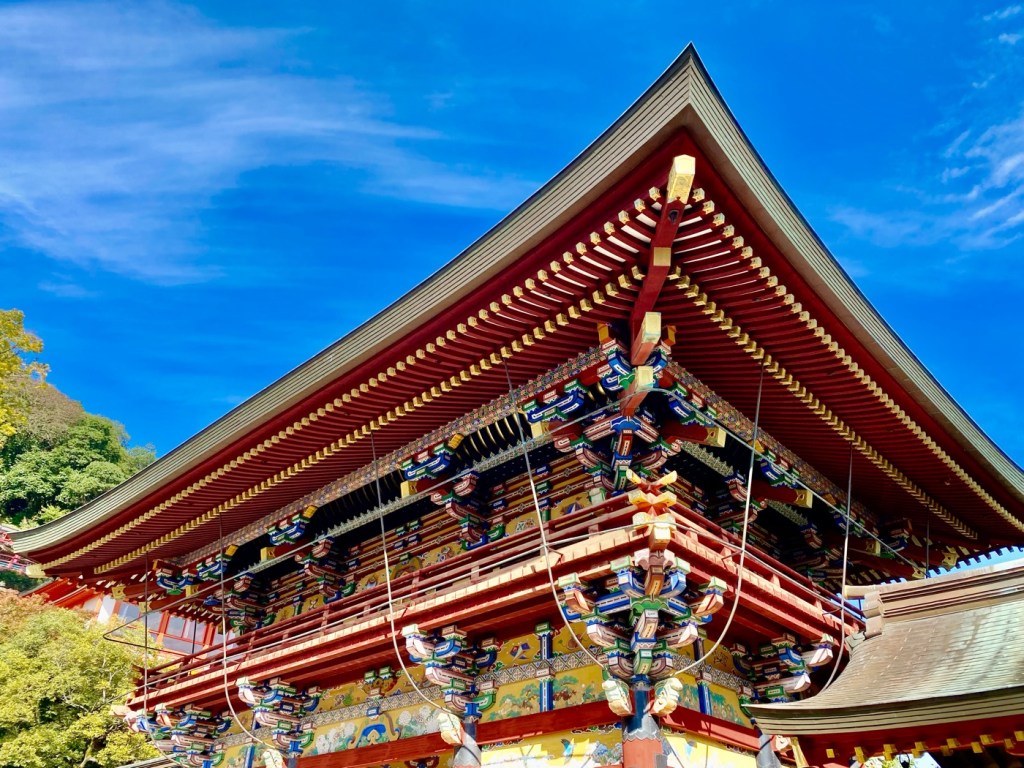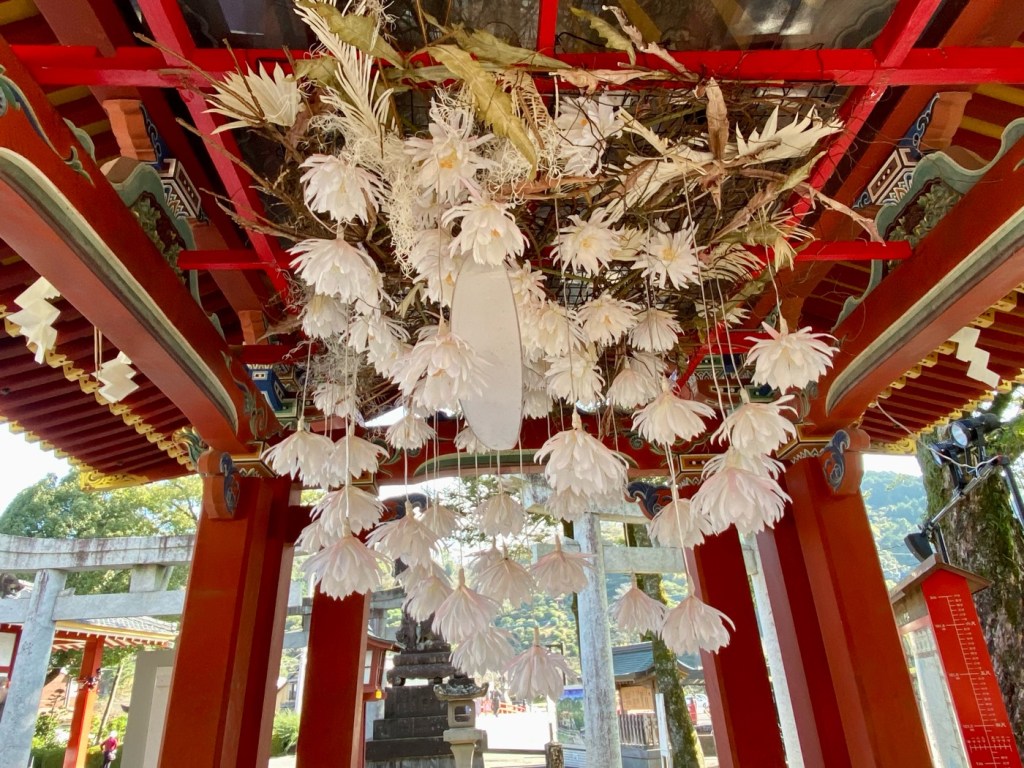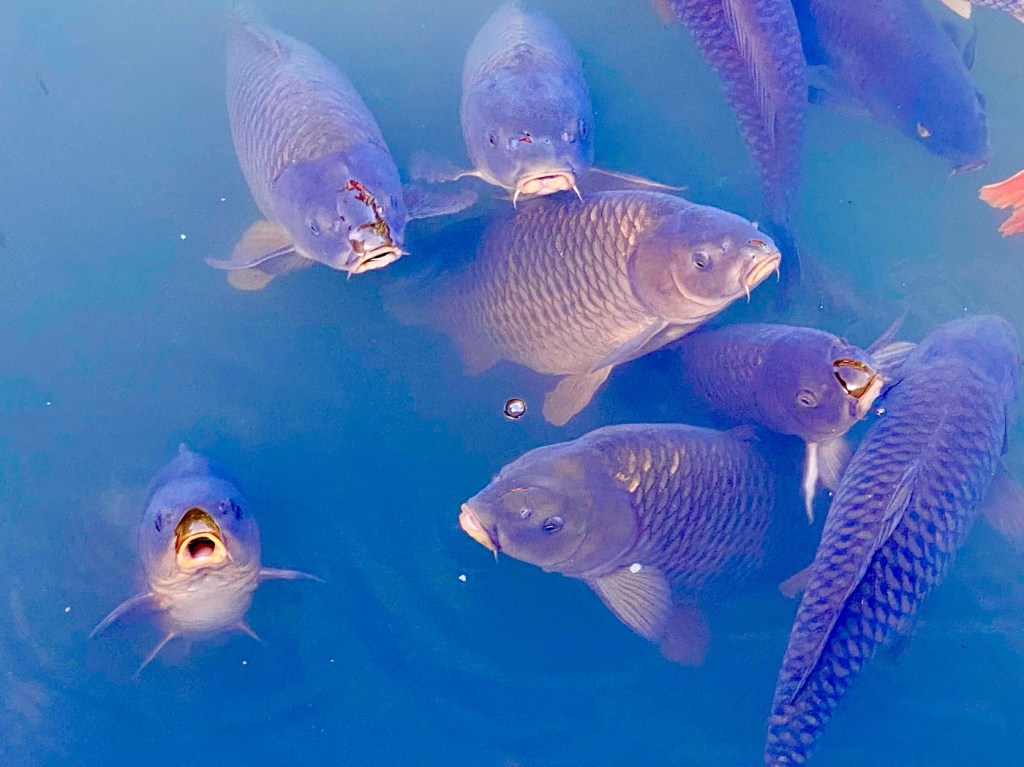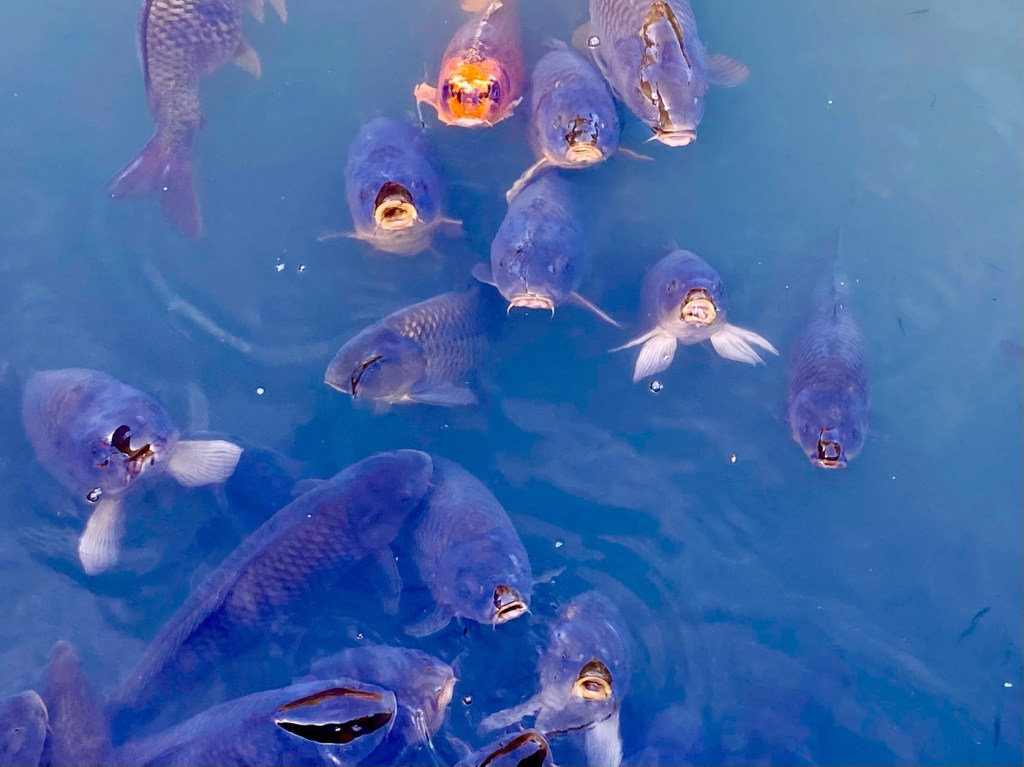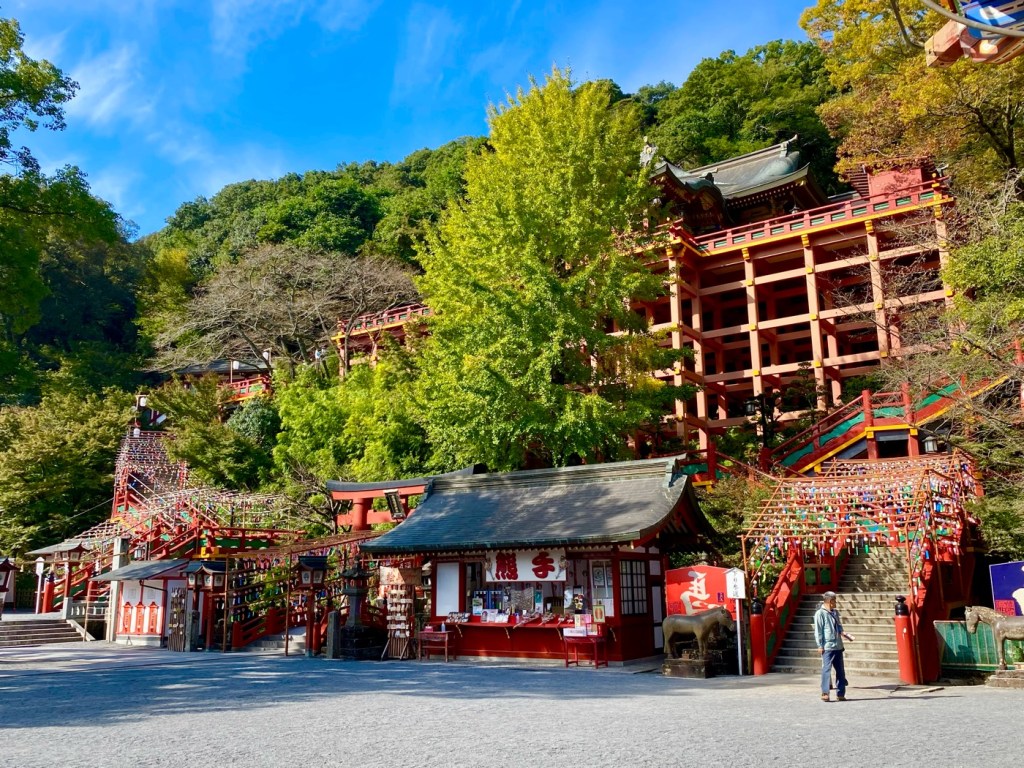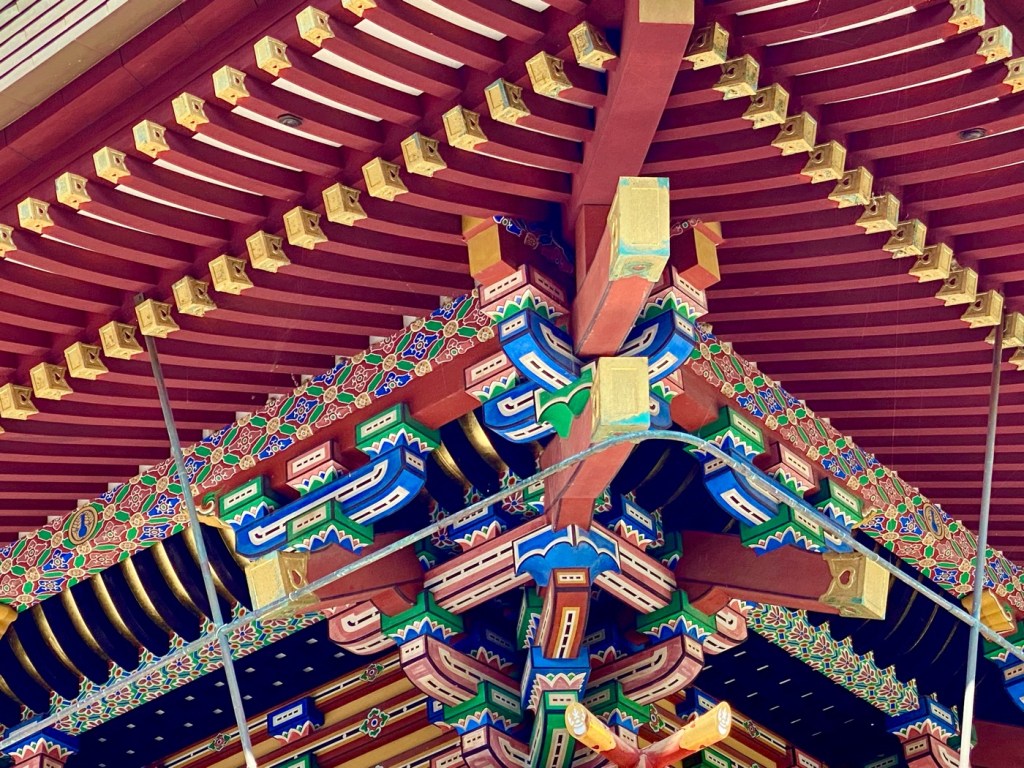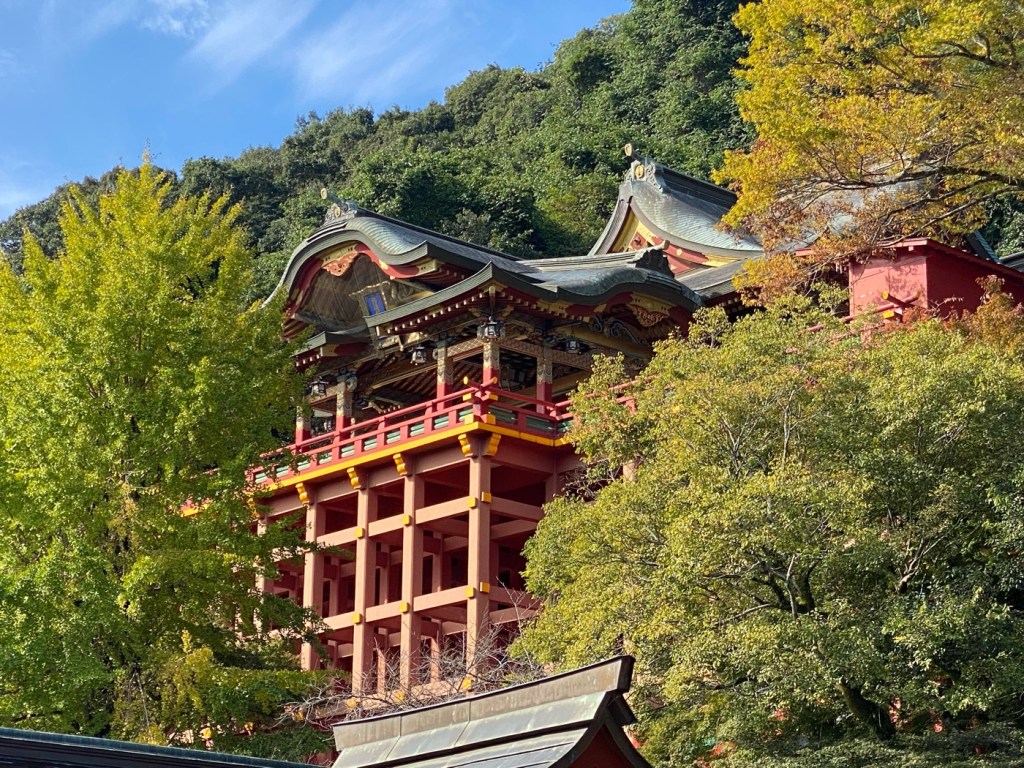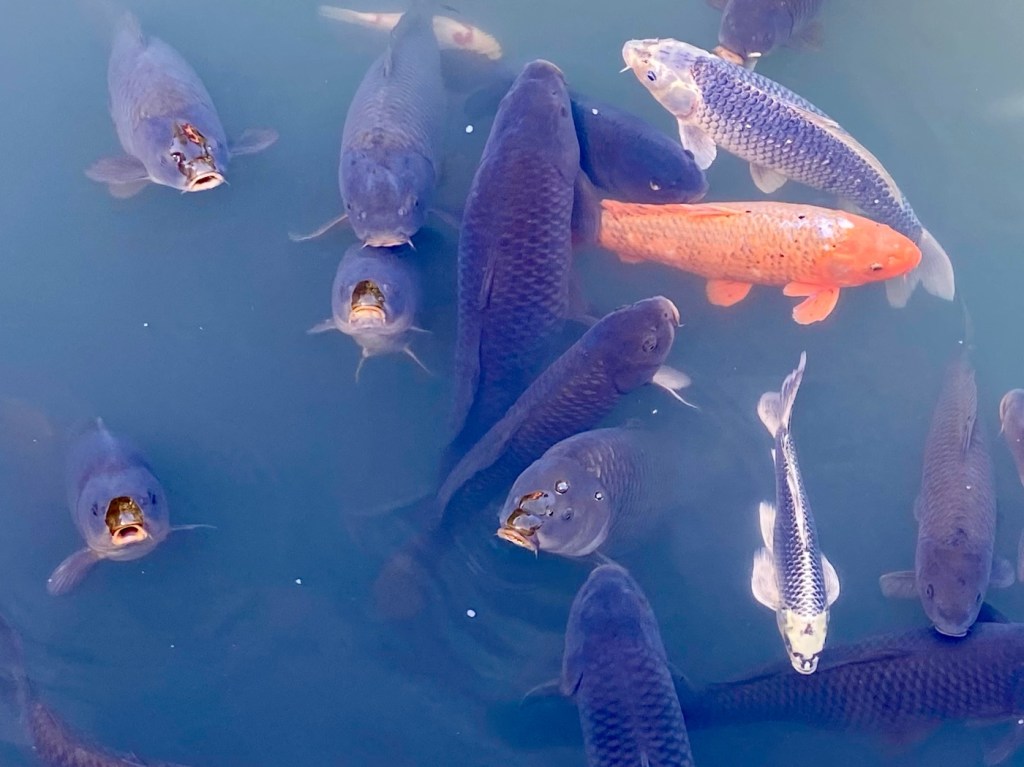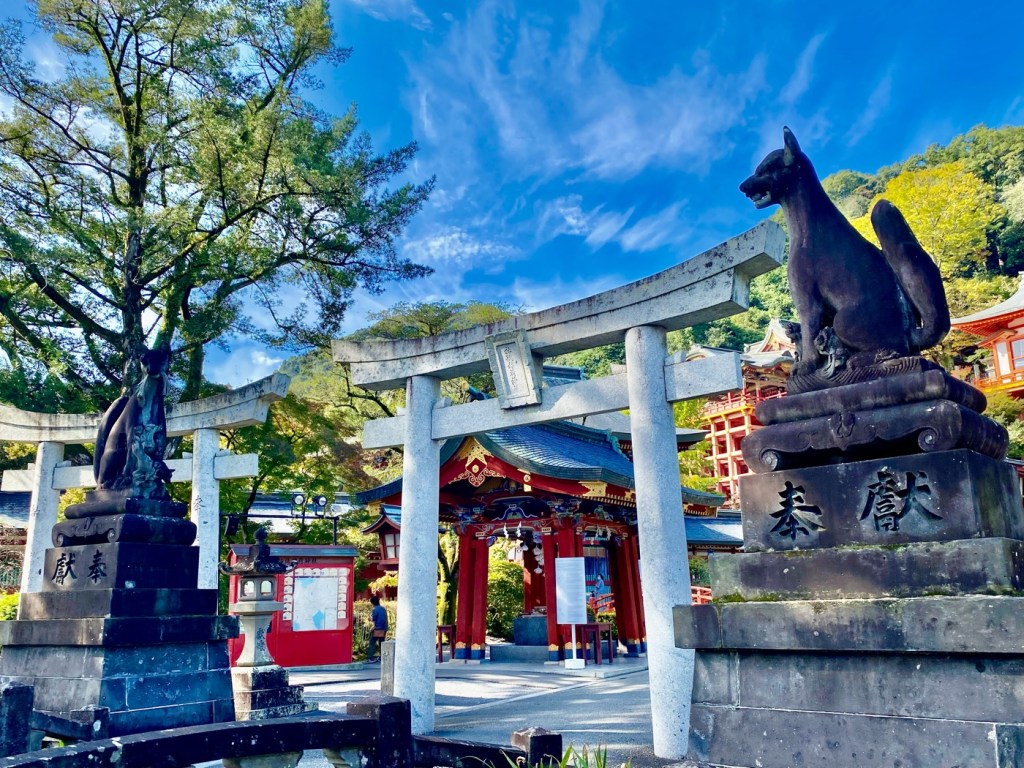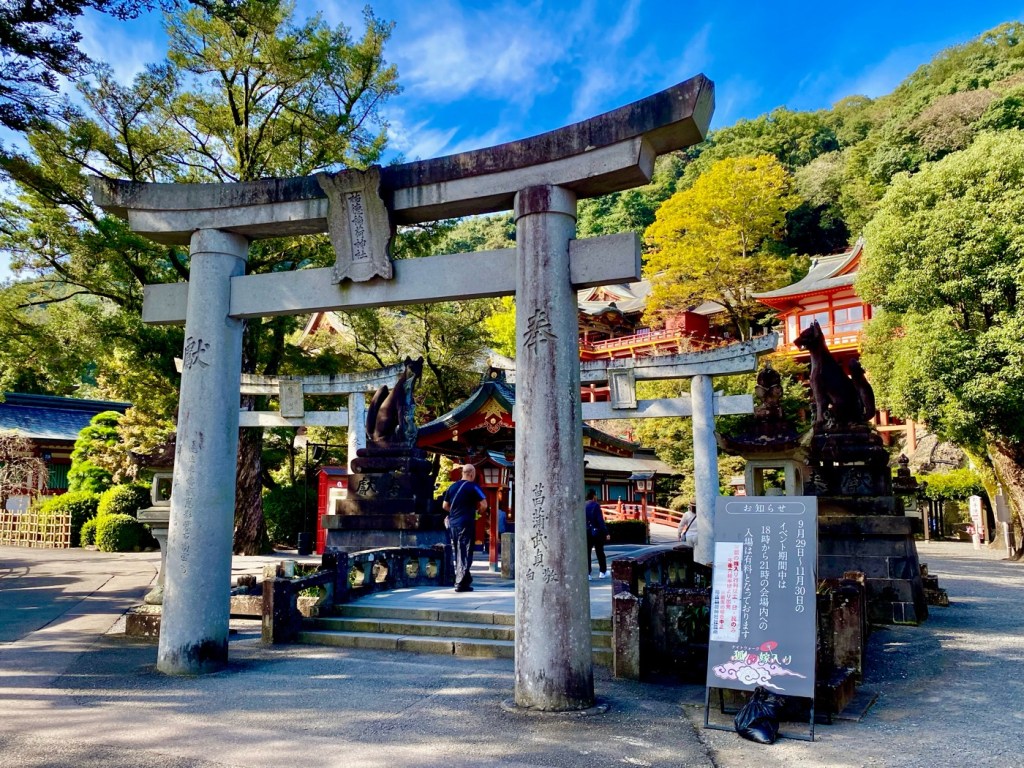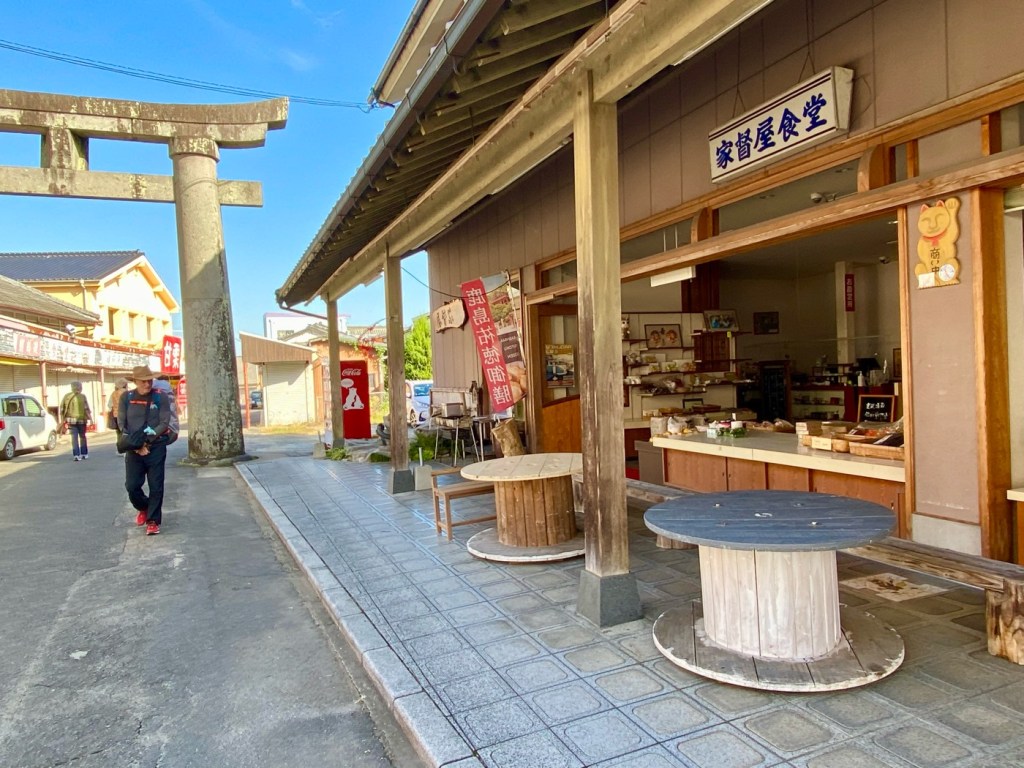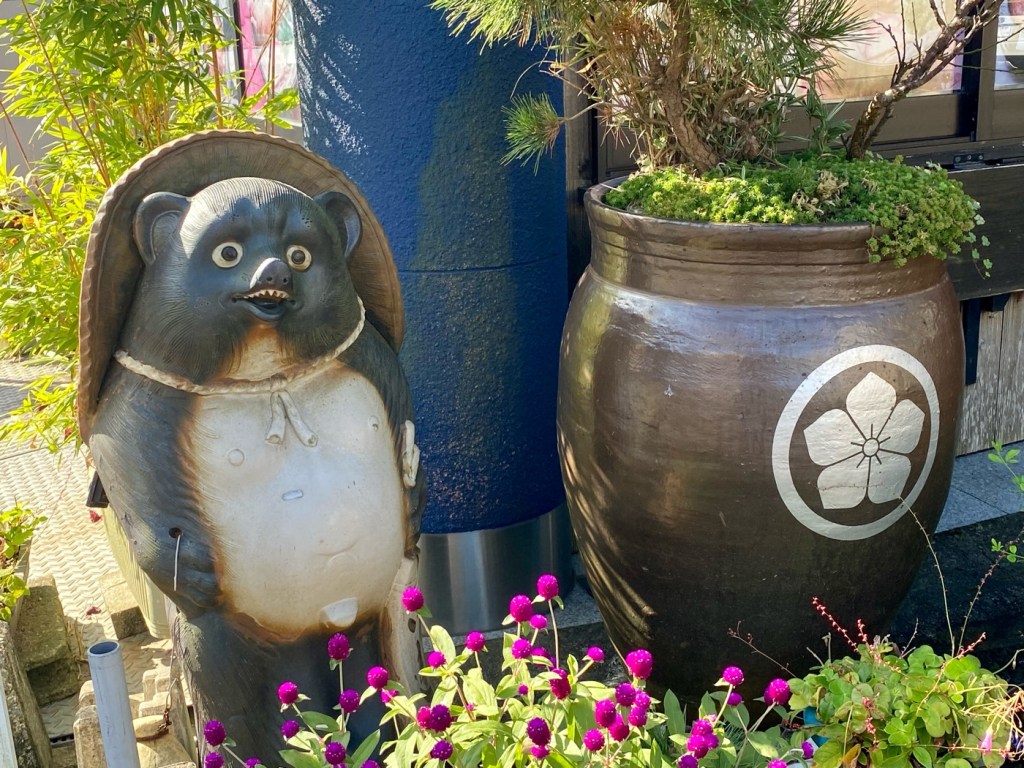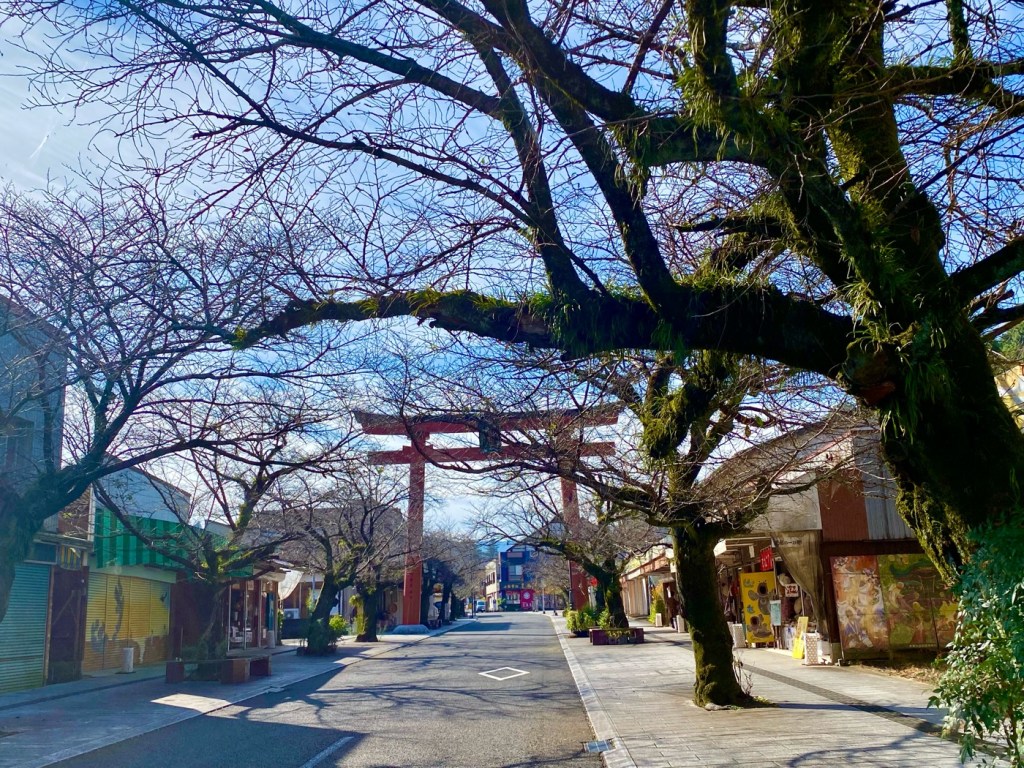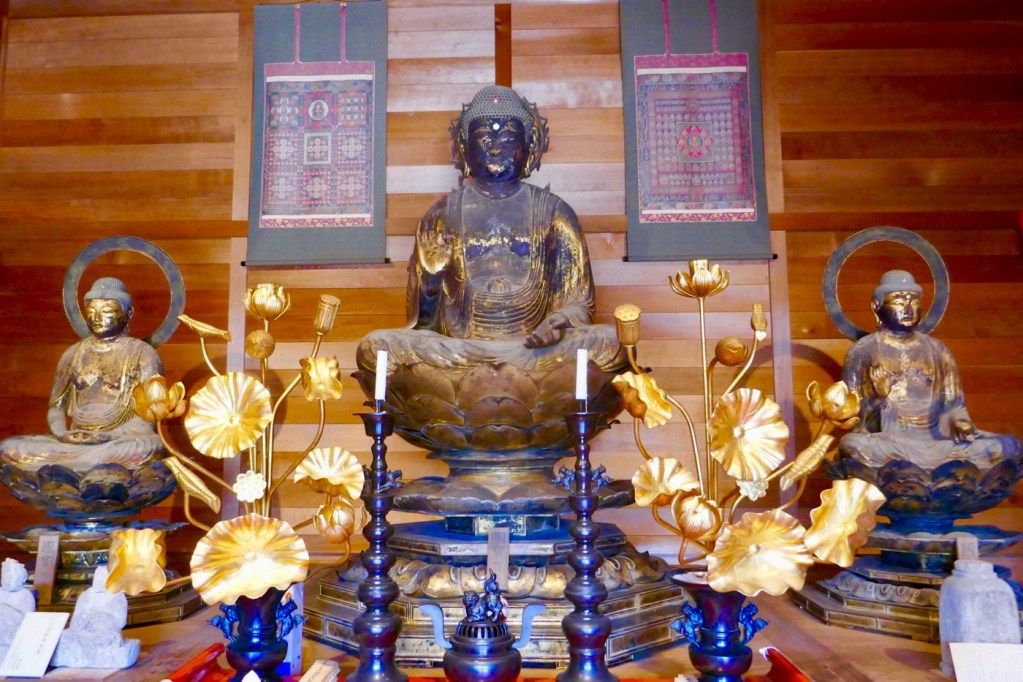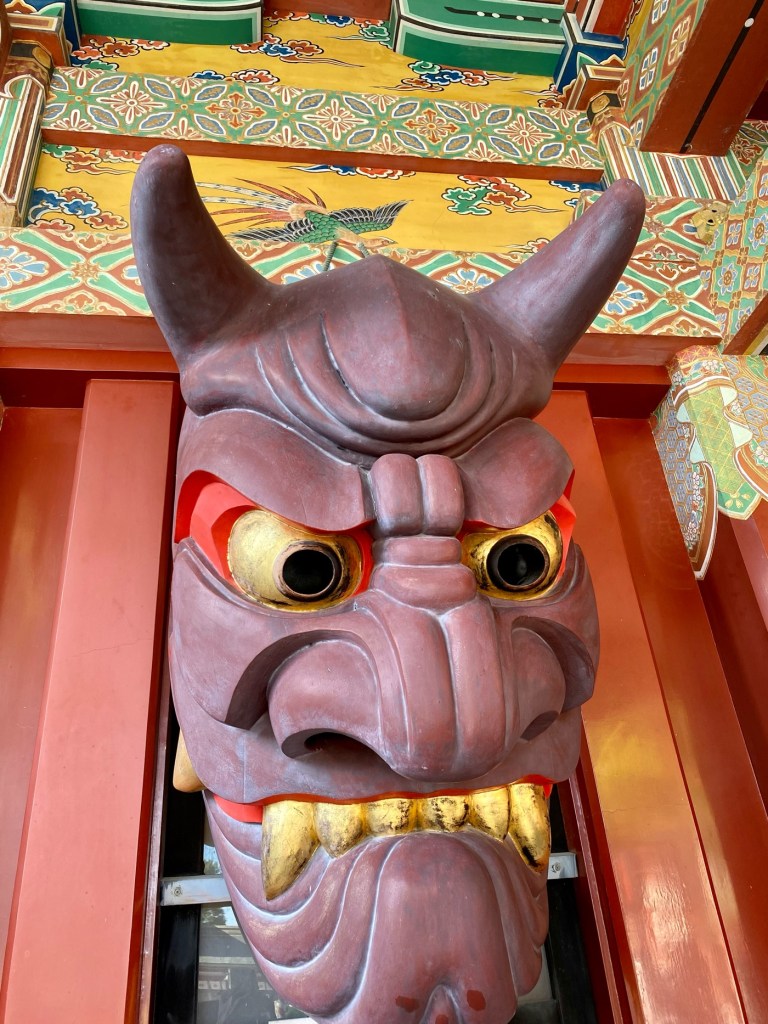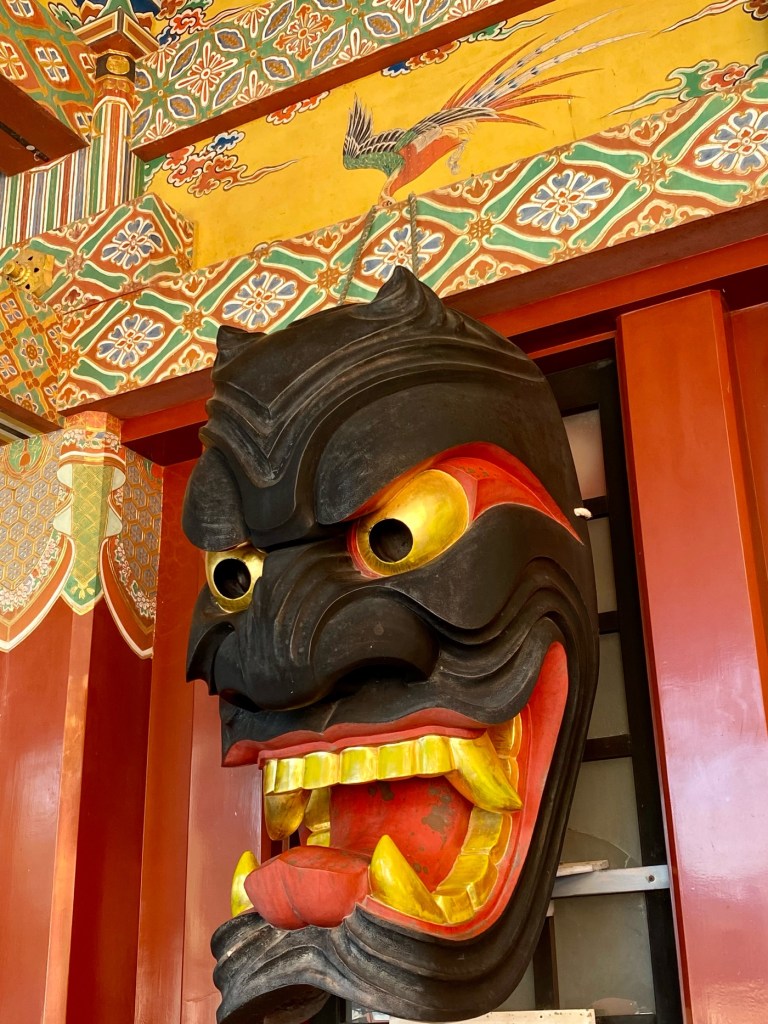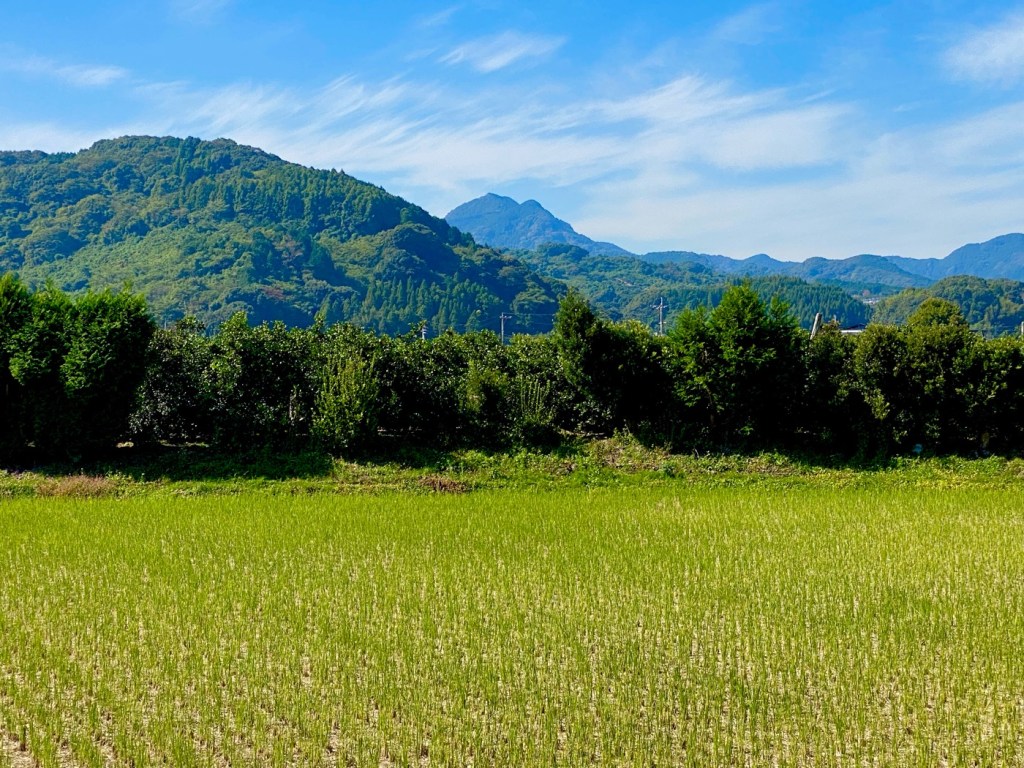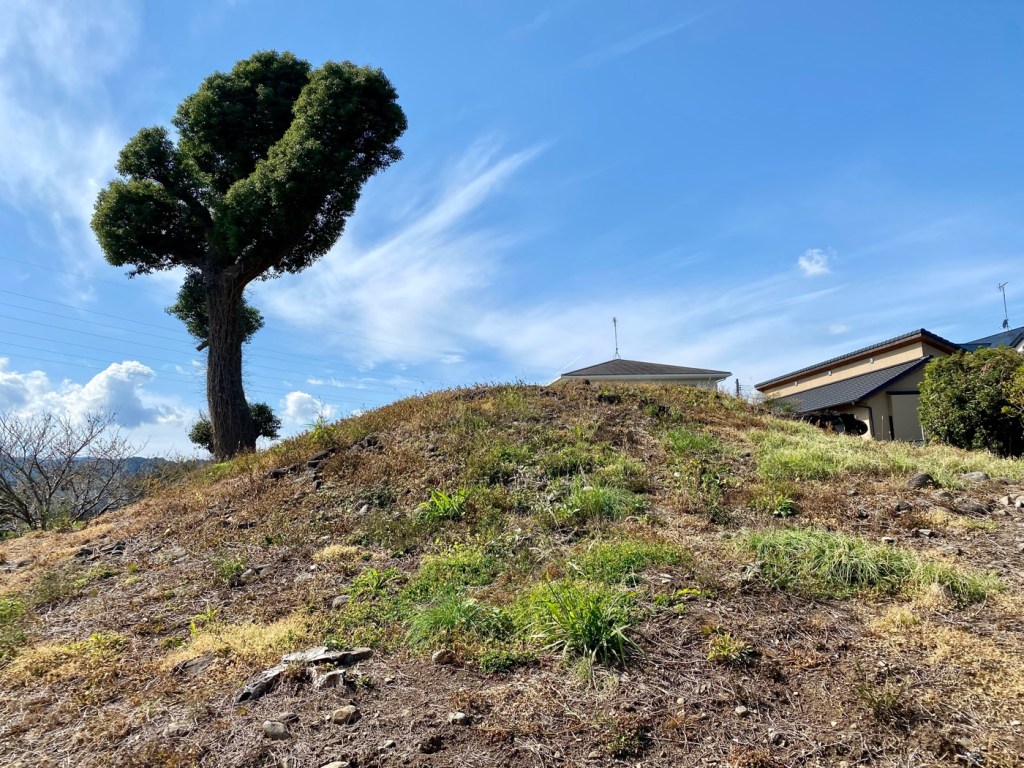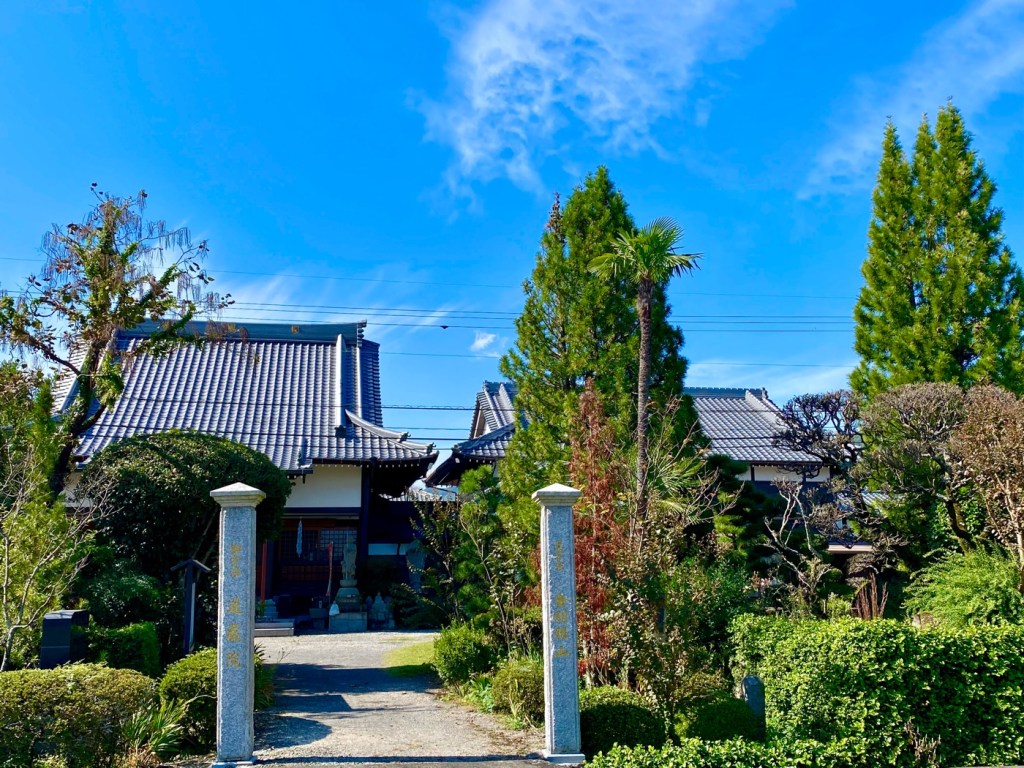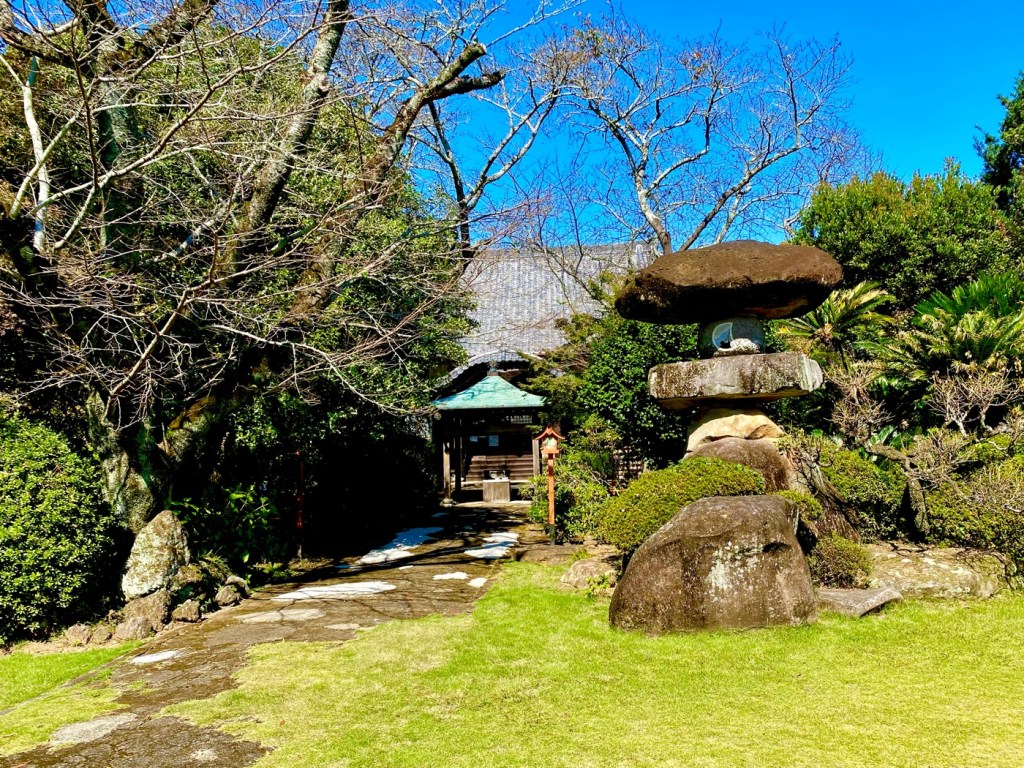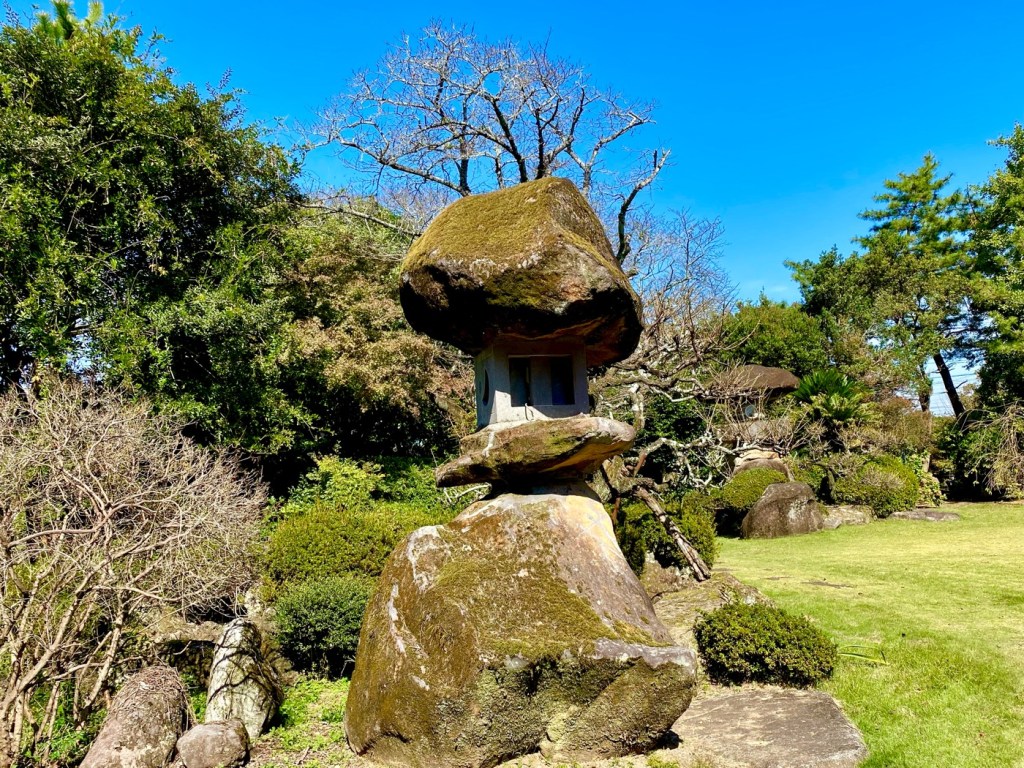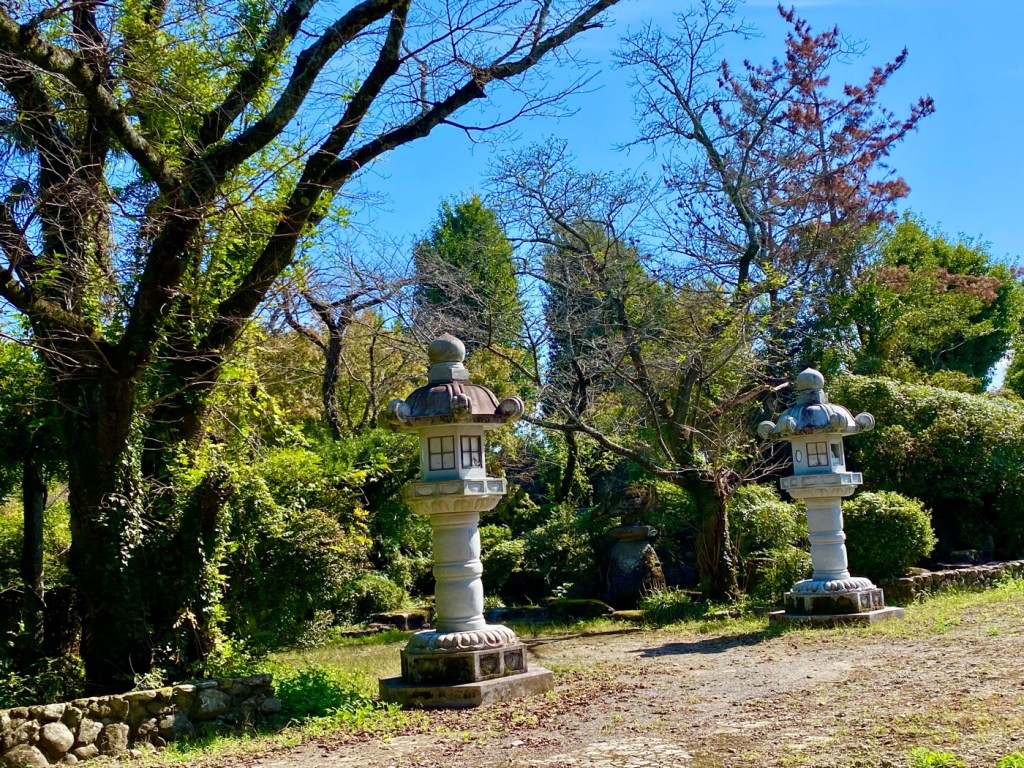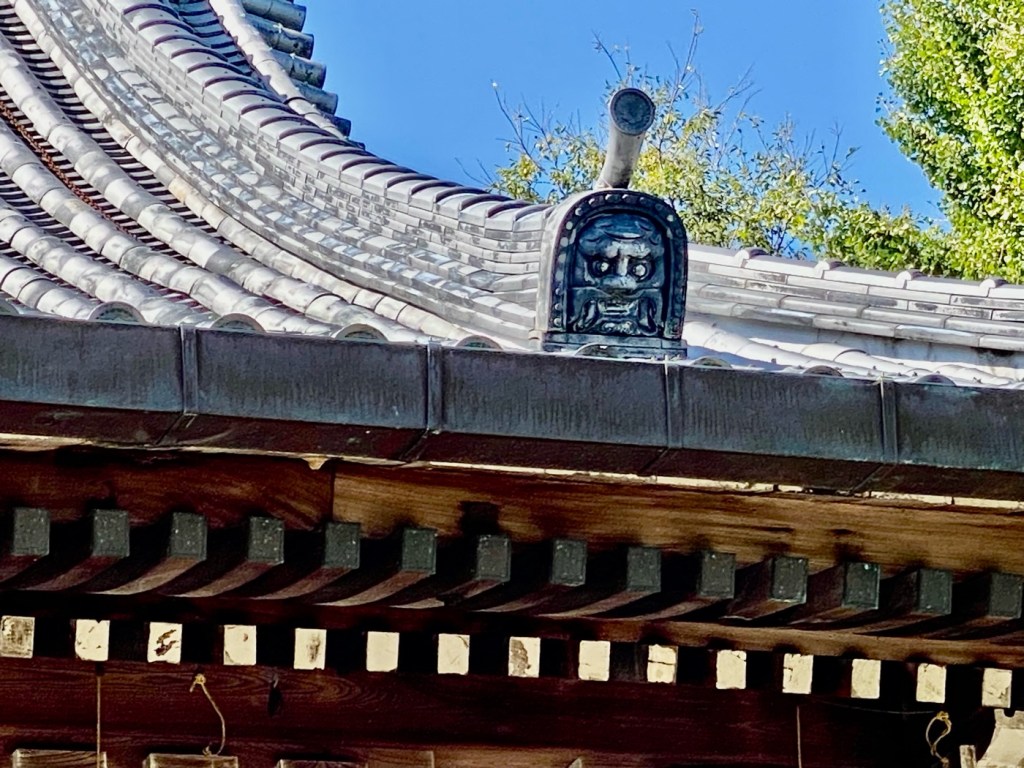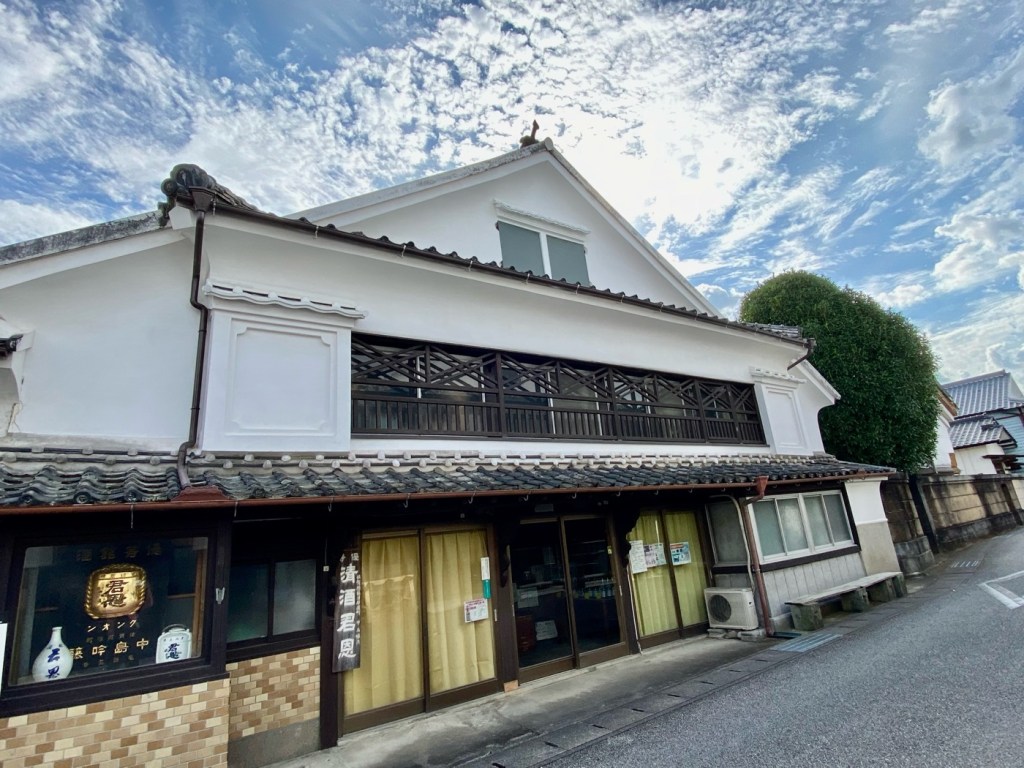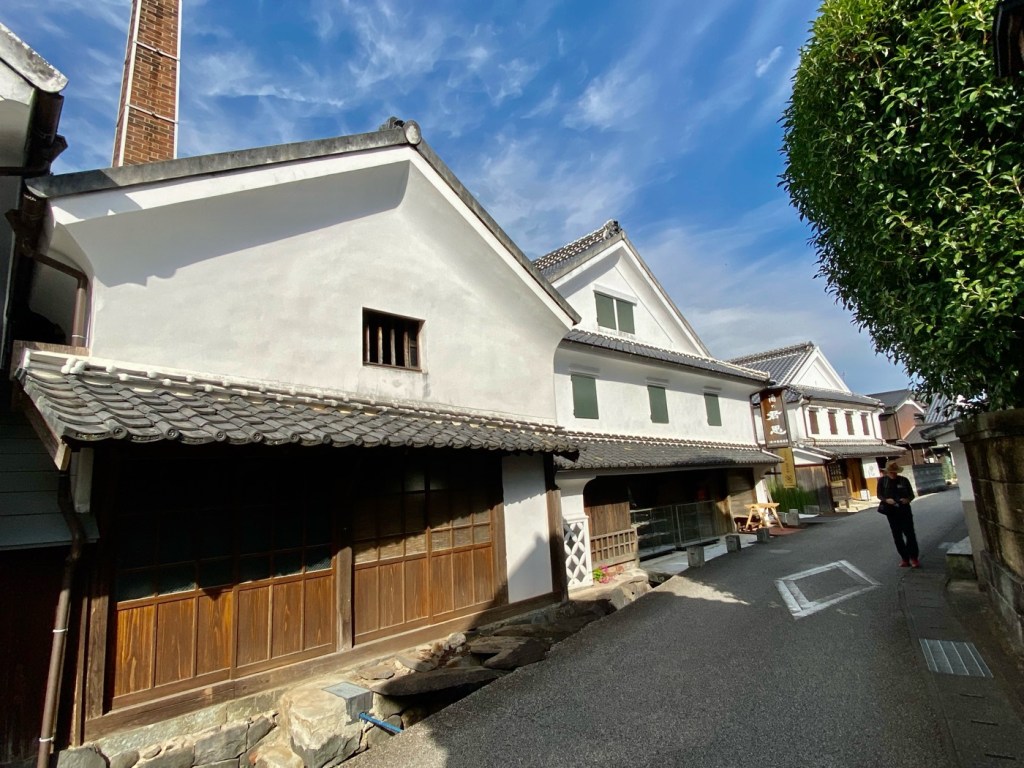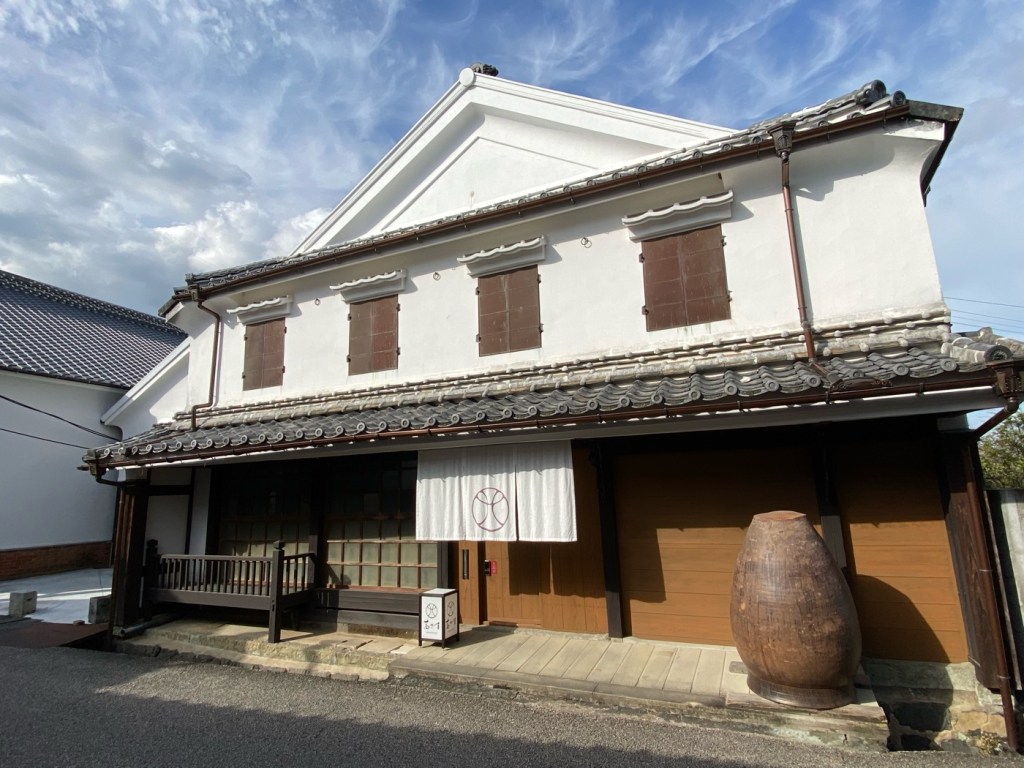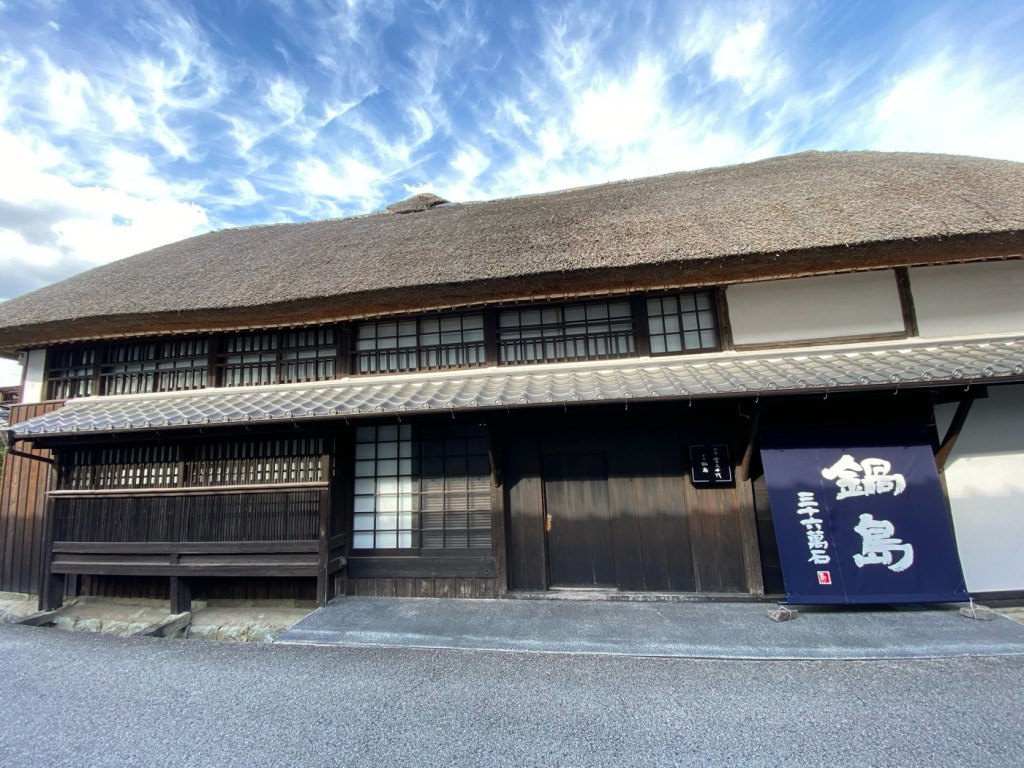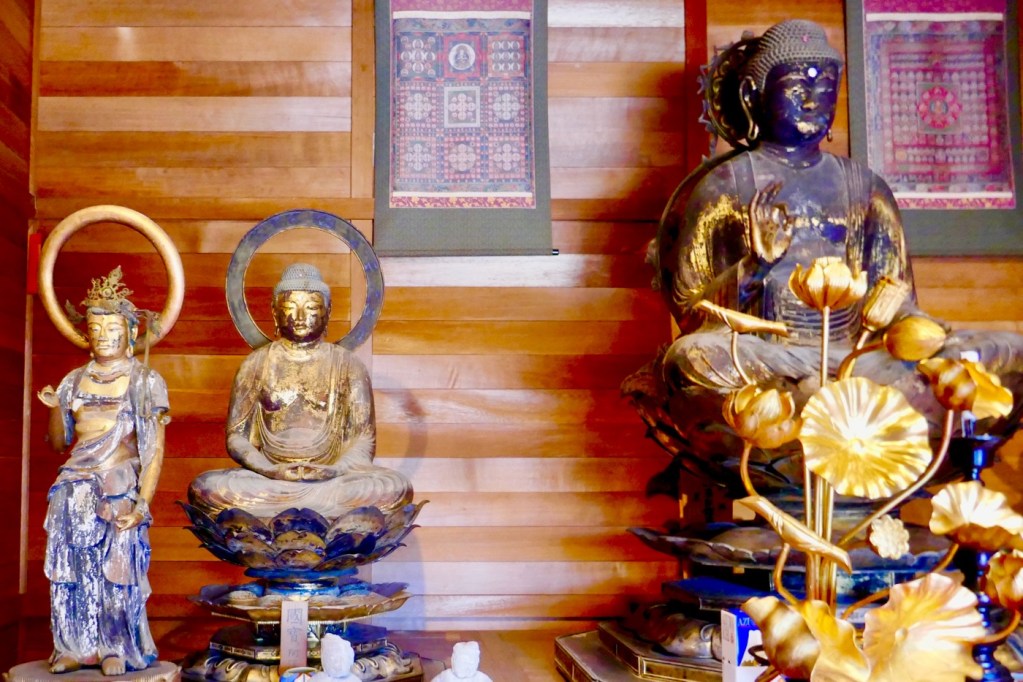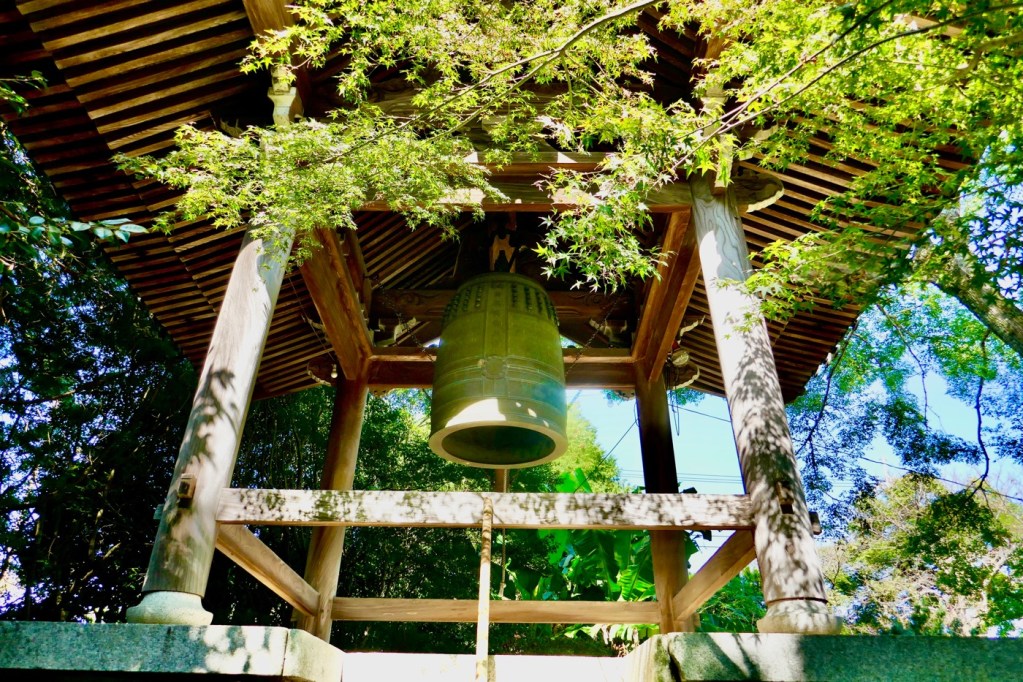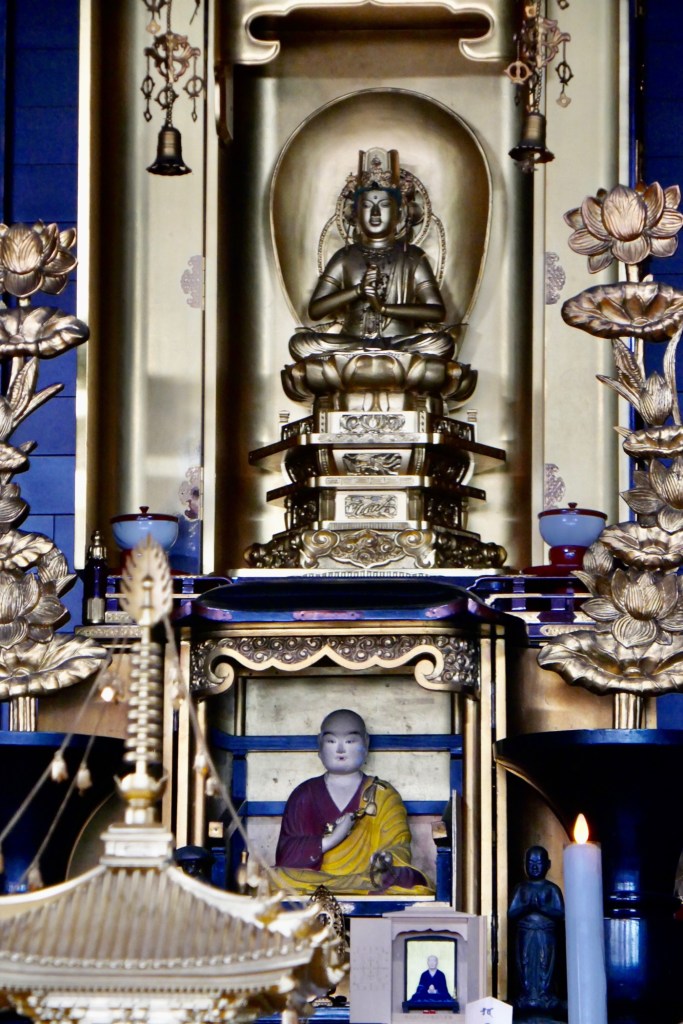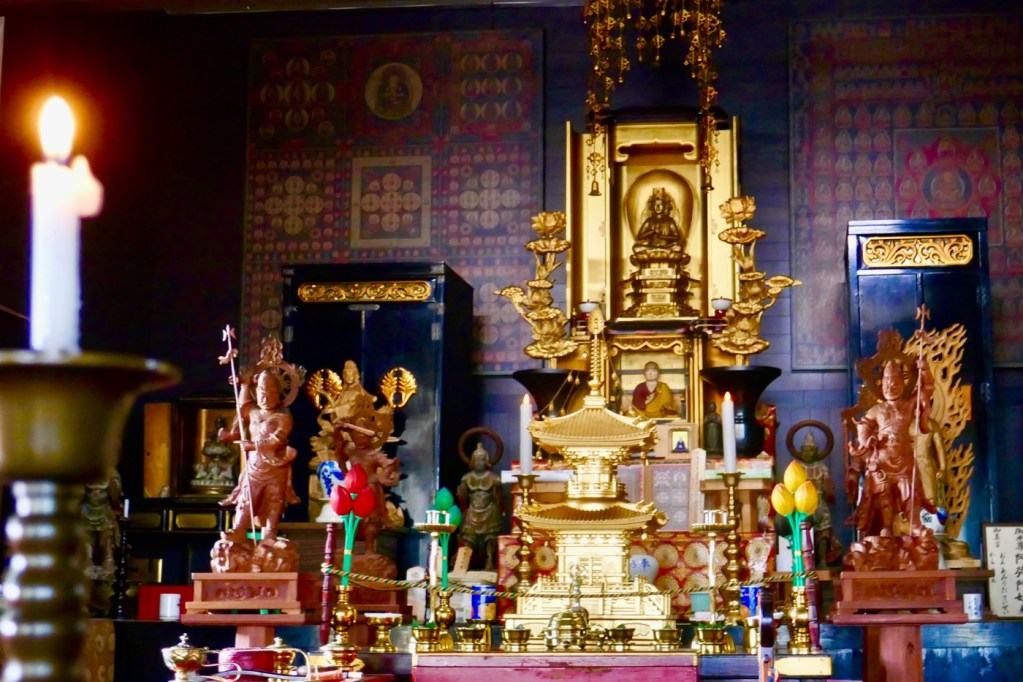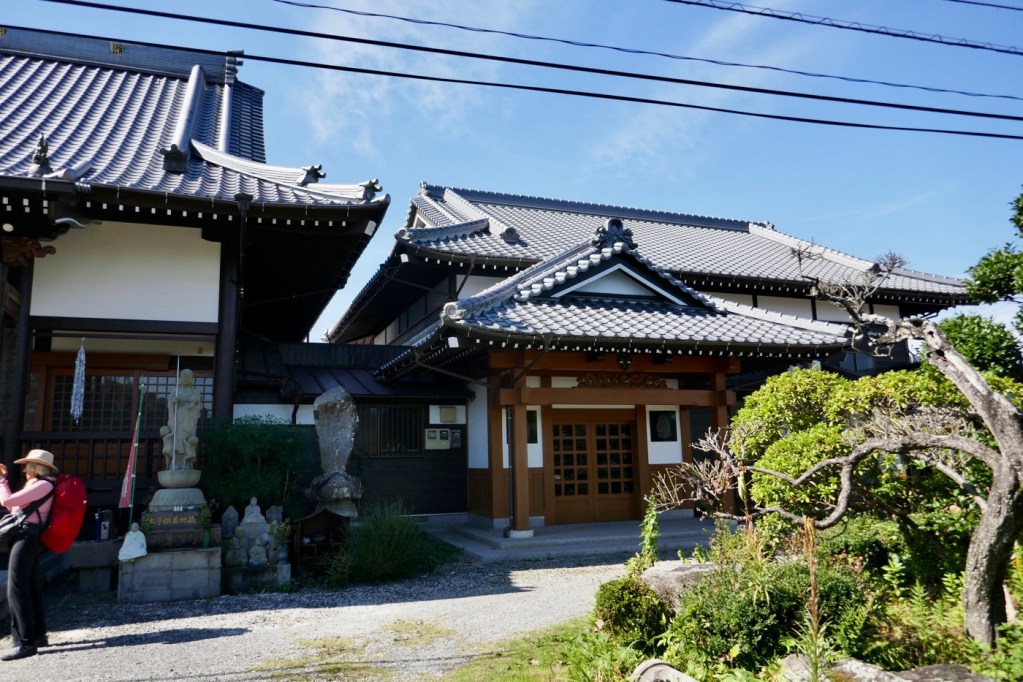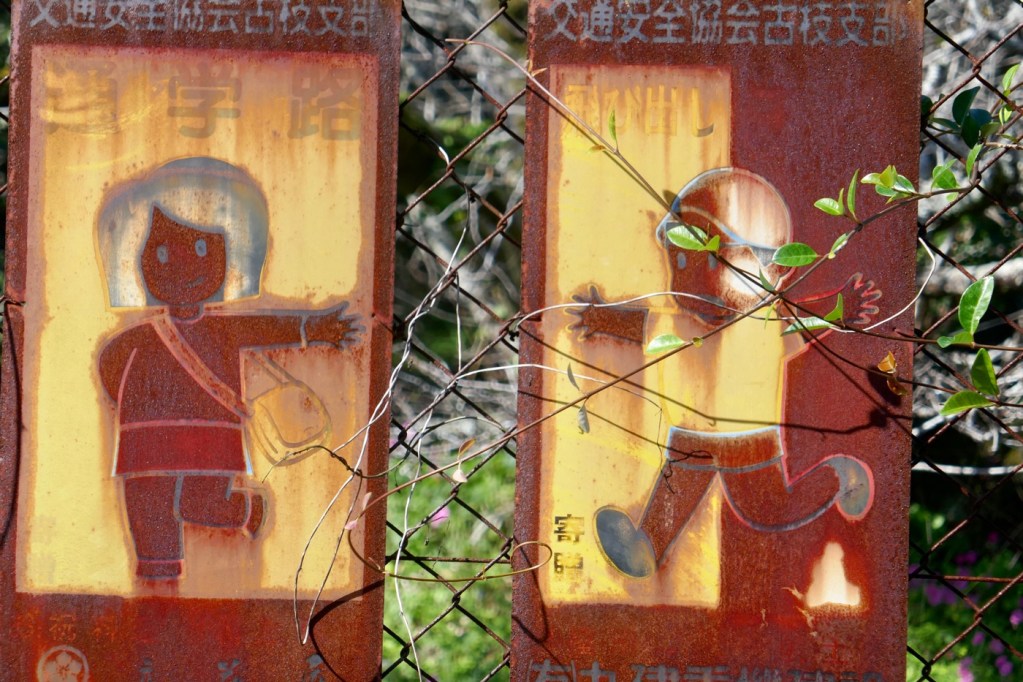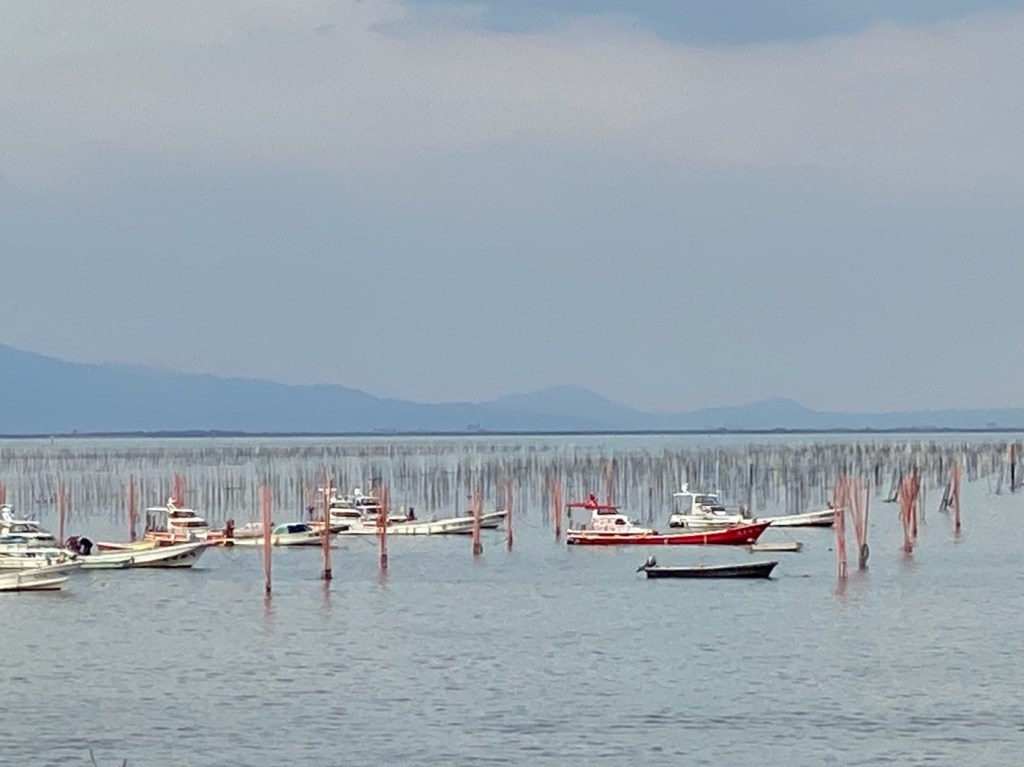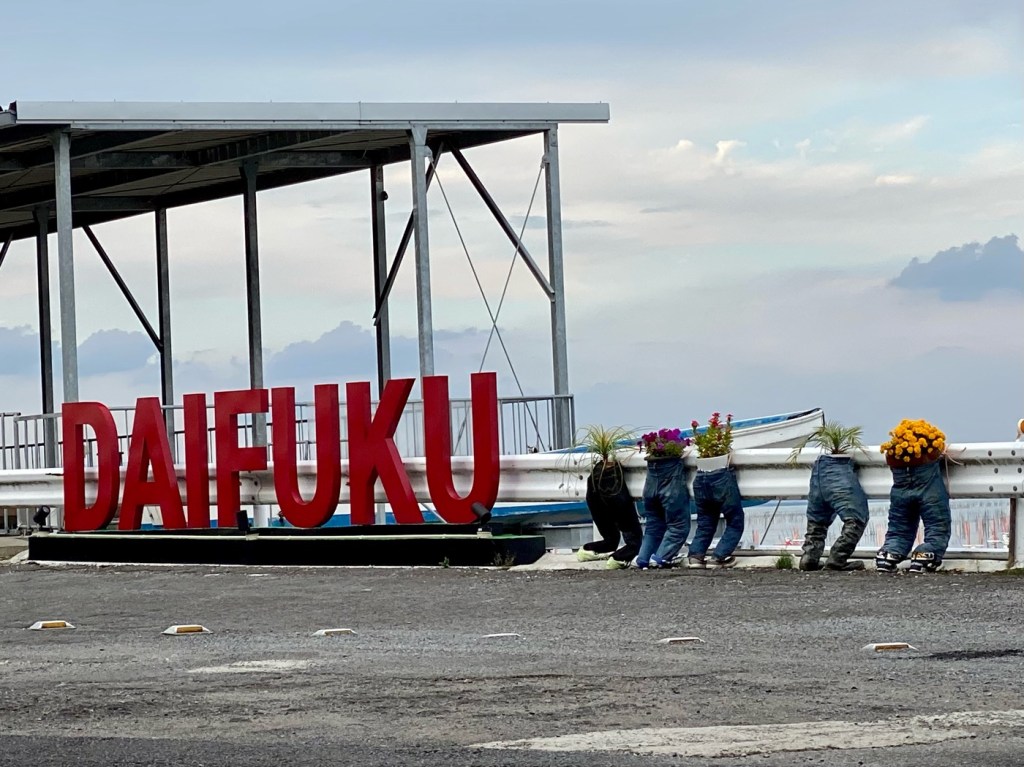Day 30 – Visiting The Yutoku Inari Shrine and Two Ancient Temples In Kashima, and Walking Along The Ariake Sea, The Kyushu 108 Temple Pilgrimage, Japan
Day 30 – Visiting The Yutoku Inari Shrine and Two Ancient Temples In Kashima, and Walking Along The Ariake Sea, The Kyushu 108 Temple Pilgrimage, Japan
Breakfast at our Ryokan hotel in Takeo Onsen was a mini-feast.
We enjoyed the hot breakfast, knowing that tonight, we would be staying in a guesthouse in the town of Kashima, without dinner or breakfast.
We are staying overnight in Kashima in order to visit two temples, and to break up our walking distances into manageable bite-sized distances, that we can handle every day.
But Kashima also has some sights to see, which we have planned to visit while we are in the area.
The first place not to be missed was the famous Kashima Yutoku Inari Shrine.
Only after we started walking up the road leading to the shrine, lined with shops and vendors selling local sweets, green tea and cheap copies of the traditional masks that are used here for mask dances, did I realize that we had already visited this shrine some years ago.
We couldn’t remember exactly when we came here, but this shrine has an amazing architecture built into the mountain, that is very special, and unforgettable.
The Yutoku Inari Shrine, like all Inari Shrines, is dedicated to the “Inari-Kami,” the god or spirit of agriculture and industry, and is characterized by its red Torii Shinto shrine gates and statues of foxes.
There are approximately 30,000 Inari Shrines around Japan, and the Yutoku Inari Shrine is counted as one of the three largest in the country.
This has long been one of Saga Prefecture’s most famous tourist spots, with nearly 3 million people visiting here annually.
If you break it up, it roughly means that each day of the year, 8200 people visit this shrine.
That is a lot of people.
After our visit, we walked to Temple #63, Mt. Kongo, Rengon-in Temple.
Located at the foot of the Yutoku Inari Shrine, it is an ancient temple that has existed since the Heian period.
The temple is located in a quiet rural setting, surrounded by traditional houses and fields of soybeans and rice.
It is said that the temple was built from a local wood called Kudo, which is hard to find in the prefecture nowadays.
The lady that opened the temple door for us was a real sweetheart.
She was so warm and welcoming.
She gifted us with bottles of green tea and water and gave us a whole bag full of local sweets and fruit jellies.
It is hard to refuse all the gifts that we are getting at each temple, but I really started feeling that eating all those sweets is making me gain weight.
The two principal statues worshipped at this temple are the Amida Nyorai and the Yakushi Nyorai.
These statues were made in the Heian period (794-1185 AD).
They are important cultural properties of the whole country, and are known as two of the few Jocho-style Buddhas remaining in the country.
When we told the lady that we were walking the Kyushu 108 temples, she let out a scream of disbelief.
“It is just too difficult!” She yelled.
Then she asked if we had the time to go see the two precious Heian Period Buddhas in the back.
We couldn’t believe our good fortune.
She took us to the back of the temple through a narrow corridor.
There stood another building, which was the inner shrine.
She opened the doors with an ancient key that was almost the size of a hair brush, and opened the very thick steel doors.
The doors were as thick as bank-safe doors, protecting the priceless statues inside.
She invited us in and said that it is OK to take photos.
We put our hands together to pray before admiring the ancient wooden statues.
We thanked her repeatedly for opening the inner shrine for us, and she said that this was the least she could do for walking pilgrims, and that we shouldn’t miss seeing something as rare as the Heian period Buddhas.
From there, we walked to Temple #62, Mitsugenzan Tanjoin.
Tanjo-in Temple is located right in the town of Kashima, but the temple’s grounds are magical.
As we entered the grounds from the busy street, it felt like we were in a mountain temple, with beautiful trees, birds singing, a bell tower, cherry trees, wisteria, azalea, and other flowering plants, bubbling waters, and large boulders.
We walked around the grounds, but nobody was around and the main hall was locked.
Finally we saw the box containing the stamps, by another building.
Just as I got set up to do my own stamping, the priest arrived.
He invited us into the main hall and took our scroll and book to stamp.
We chanted and prayed and then chatted with the friendly priest.
He showed us the inner shrine, where a statue of Kokyo Daishi Kakuman, the monk who founded this temple, sits at the foot of an old Fudo Myoo statue.
The priest was very friendly and interested in our journey.
He asked where we would be staying tonight and where we would eat our dinner, had we eaten lunch already and what we liked to eat.
When I told him the name of the guesthouse we would be staying at, he offered to drive us there.
We thanked him and refused.
Then he offered to buy us lunch at either a ramen place or a sushi place, but we had to refuse his generosity, because I had made prior arrangements to drop our bags at the guesthouse early, so we could continue our walk towards Nagasaki.
He gave us cookies, and allowed us to take photos in the Hondo.
Jules felt bad about the fact that we had refused all the generous offers from the kind priest.
In the old days, walking pilgrims depended on the generosity of priests and locals, to provide them with food, money and places to sleep.
But we had very little time today to linger, and we really did not need any help of any kind.
The monk asked if we could spend a few more minutes with him so he could take us to see the ancient Kofun Tumuli mound, that was just around the corner.
We were happy to go with him.
He put our backpacks inside the main hall and locked the door.
He took us through a nearby alleyway that led to a grassy mound.
He opened the gate and we walked around to the opening.
Huge stones lined the interior of this Kofun that was not marked on any map.
Inside it was cool and the construction of the huge flat stones was awe inspiring.
It was hard to imagine how they could have lifted these huge stones into place, and then covered them with tons of soil, and how it survived until this day, standing in place with all the earthquakes and Tsunamis for over 1700 years (the Kofun area dates from 300 AD – 538 AD.)
When we returned to the temple, he took us to ring the ancient bronze bell, that has stood here for over 1000 years.
He demonstrated how to do it, and then each one of us hit the bell with the same wooden log used for centuries.
We departed the temple feeling like we were leaving behind a good friend.
Who knows, perhaps we were good friends in past lives, because we really felt comfortable in his presence, although he couldn’t speak English at all and all the communication was done with my basic Japanese.
After dropping our backpacks at the guesthouse in town, we walked over to the preserved historic street called Hizen Hamashuku.
This area was once a post town along the Nagasaki-kaido Road during the Edo period.
Later, the area developed because of Saké and the fermenting industry, the fisheries and the marine produce processing industry.
We chose to eat something in a cafe on the Historic Buildings street, before continuing our walk along the sea.
It was a cute cafe and pretty busy with Japanese tourists.
It also had Amazake ice cream.
Amazake is a Japanese warm drink made from fermented short grain rice, using Koji as the fermenting catalyst.
Amazake dates from the Kofun period and it is also sold cold in carton boxes (similar to milk) in supermarkets and made into ice creams.
On our stroll, we saw a small group of people who sat along the street, using watercolors and pencils to render the restored old buildings.
Many of the Saké breweries offer tours of their distilleries.
From there, we walked along the Ariake Sea, in order to cover some of the long walk we needed to do to get to our next temple, located in Nagasaki.
The Ariake Sea boasts the largest tidal variation in Japan with approximately 6 meters of difference between high and low tides.
This is due to the gravitational pull of the moon.
Not always could we even see the sea during our walk, but often when we had the chance, we quickly crossed the busy road to see the expansive tidelands, created by the low tide.
Boats were moored in the mud at low tide and tidal-pools of living organisms could be seen.
The Roadside Stations along the coast are actually designated as tourist attractions.
In these shops, you can buy fresh produce grown by local farmers and try the seafood and other items.
We decided that because we had a very late lunch, we would walk as far as we could until dark, and buy fruit at the Roadside station to have for dinner.
The bags of oranges or persimmons had above them the names of the farmers, photos of their farms, their families and statements about their farms.
We returned to our guesthouse in Kashima.
The guesthouse is a beautifully restored old house with shared toilets and shower.
We were the only guests for the night, and the owners do not live there.
The futons on the tatami mat floor were very thin and didn’t offer a comfortable night’s sleep.
But I was grateful to have a hot shower, a nice clean living room with sofas to sit on and a place to wash our laundry.
It was a long day.
We did not do a lot of walking because we visited many sights and ran out of time, but it was a very enjoyable day.
Sending you love and smiles,
Tali
Stats: 24,695 steps
Today’s walk: 17 km
Kilometers walked to date: 510
Temples visited:
Temple #63 Mt. Kongo, Rengon-in
Temple #62 Mitsugenzan Tanjoin
And the Yutoku Inari Shrine

